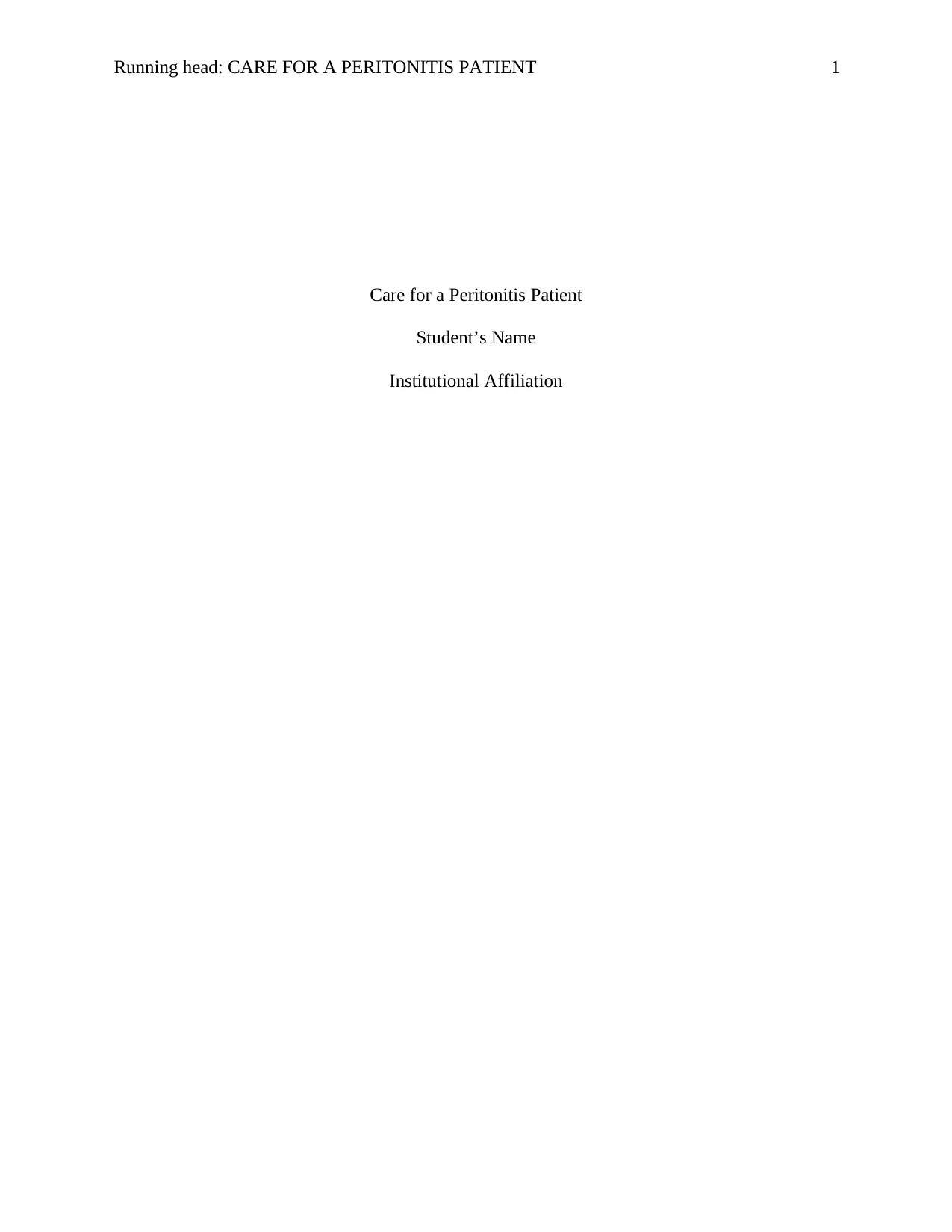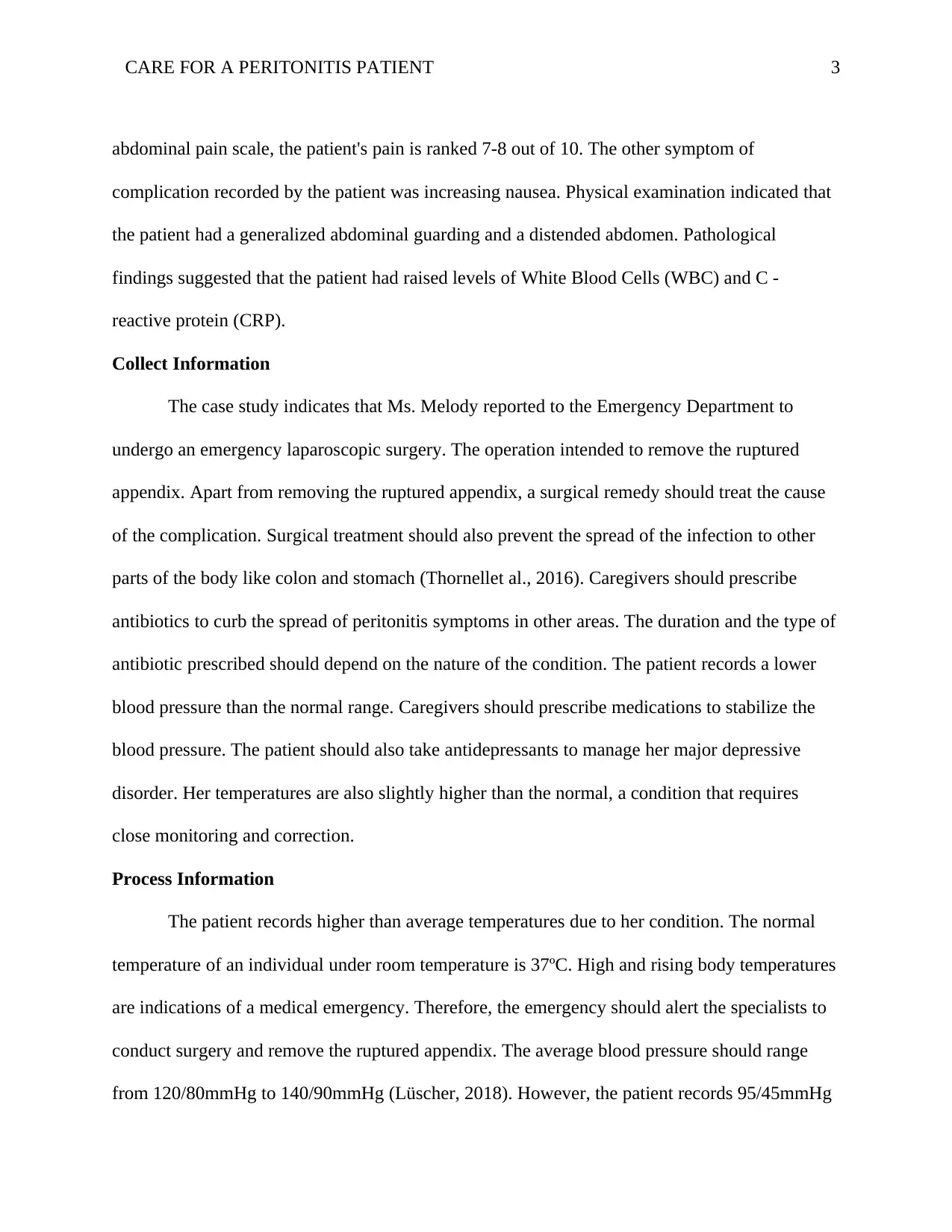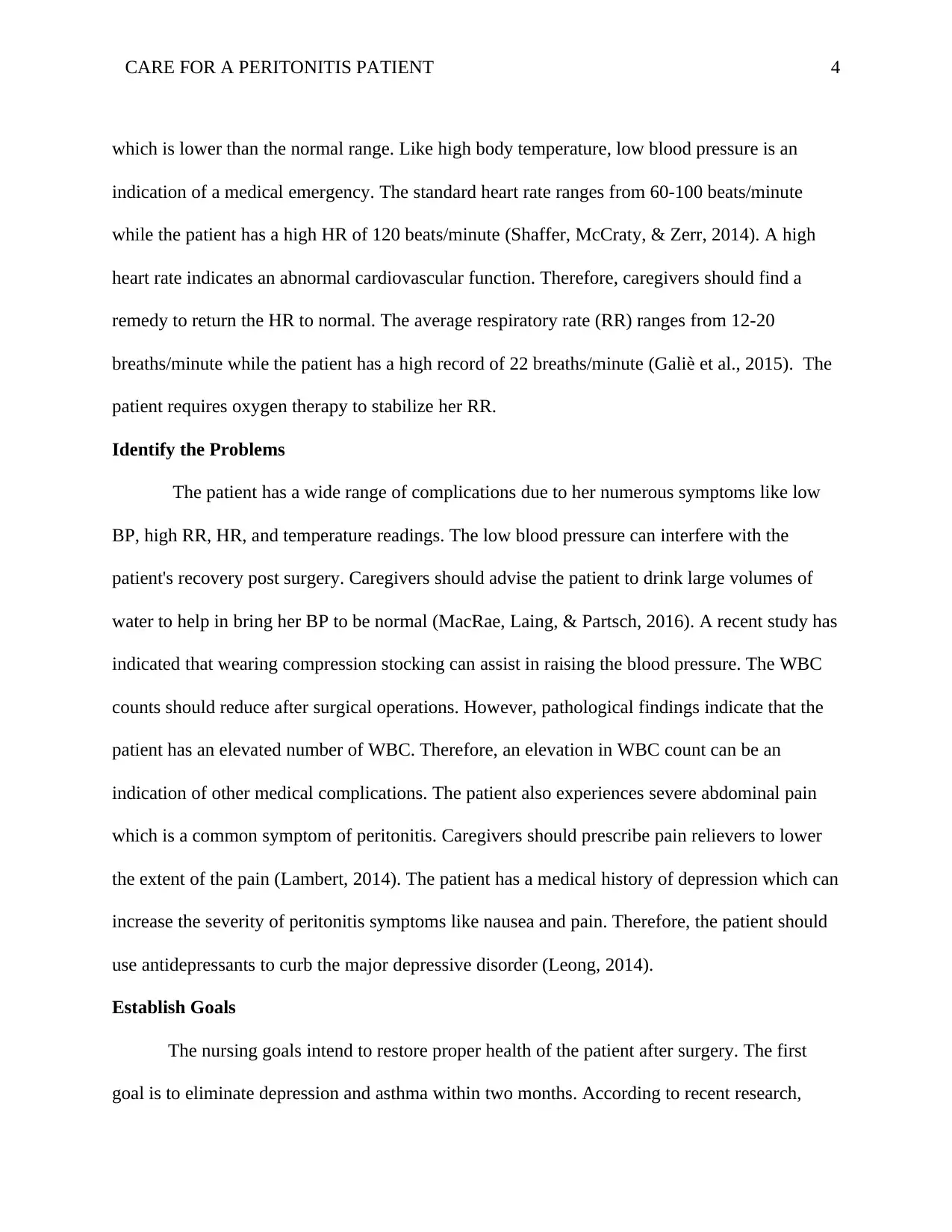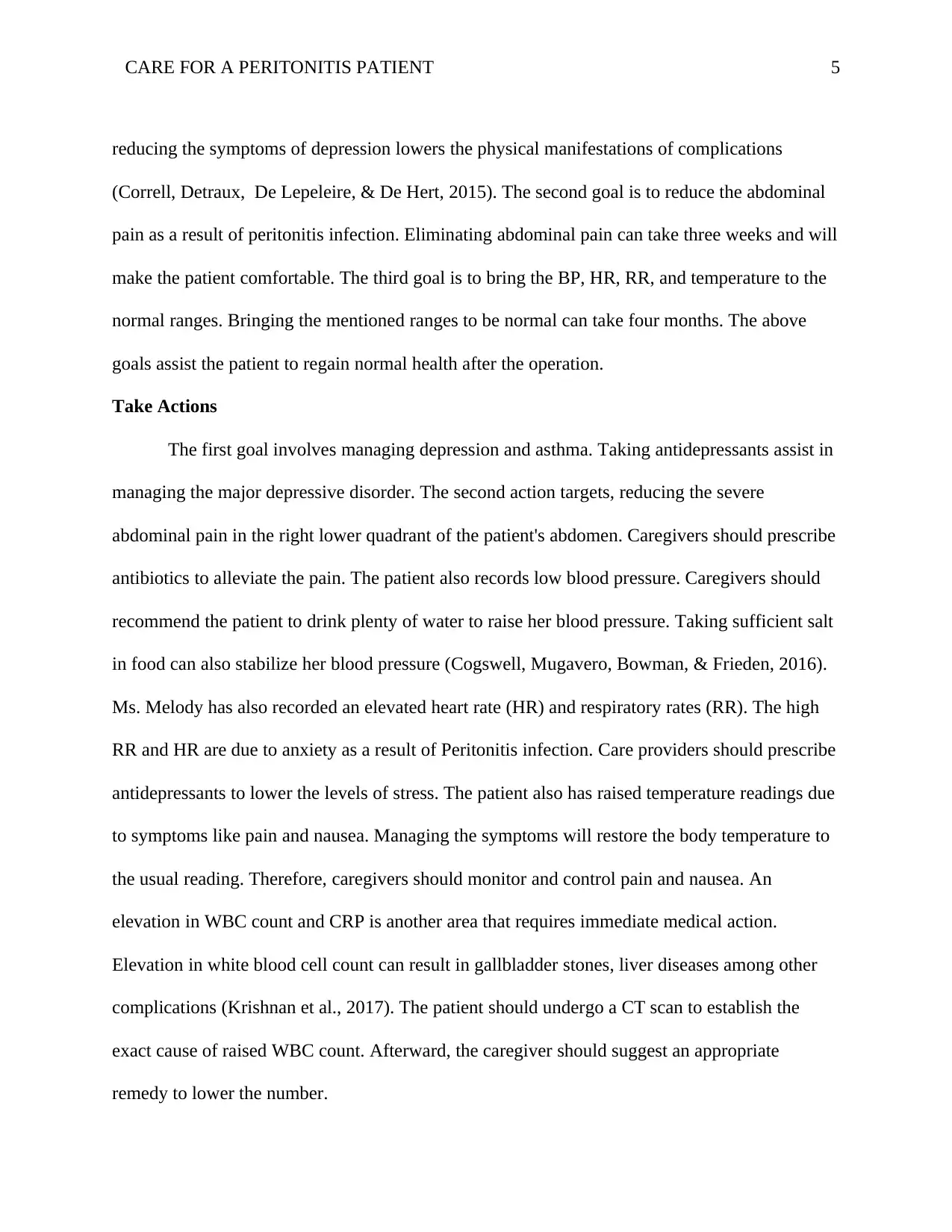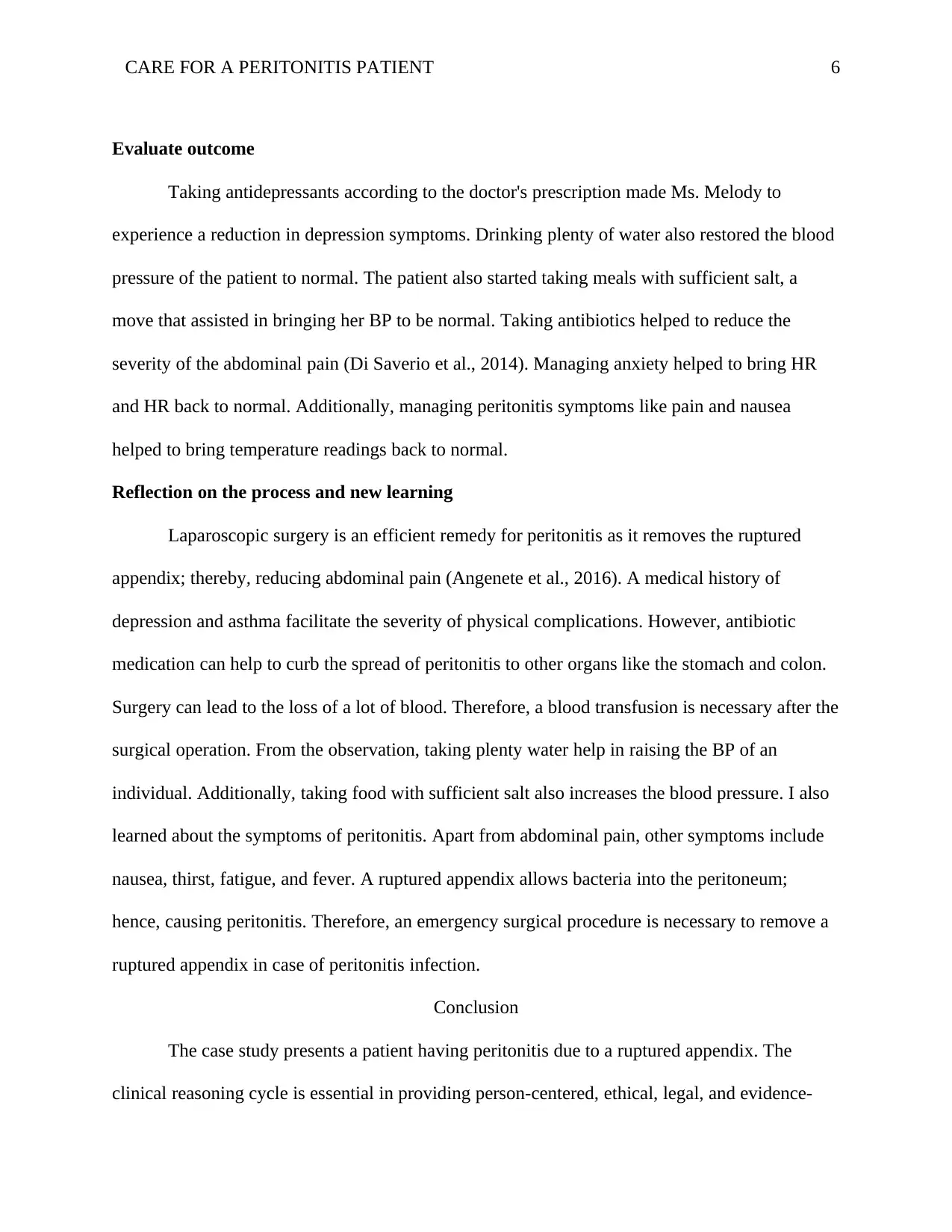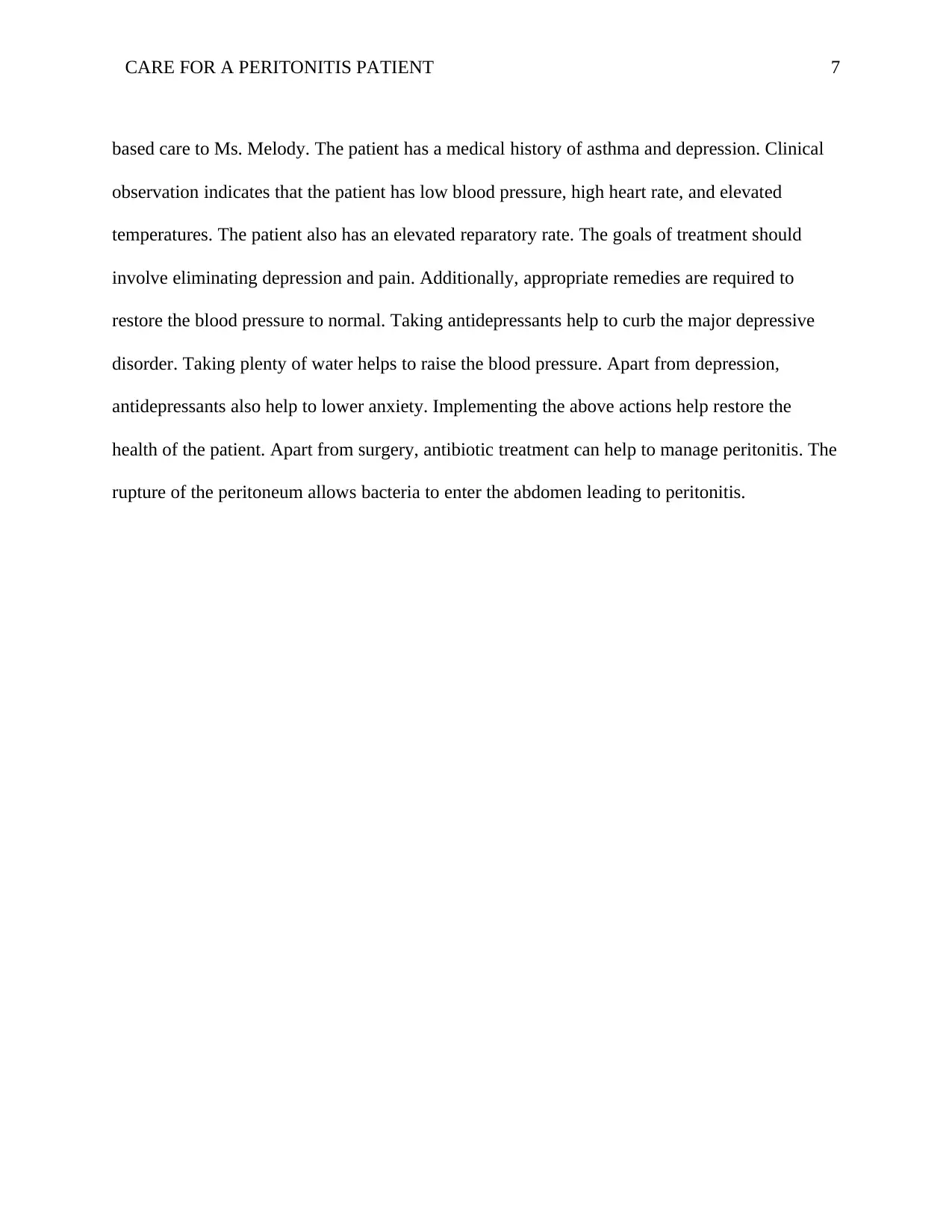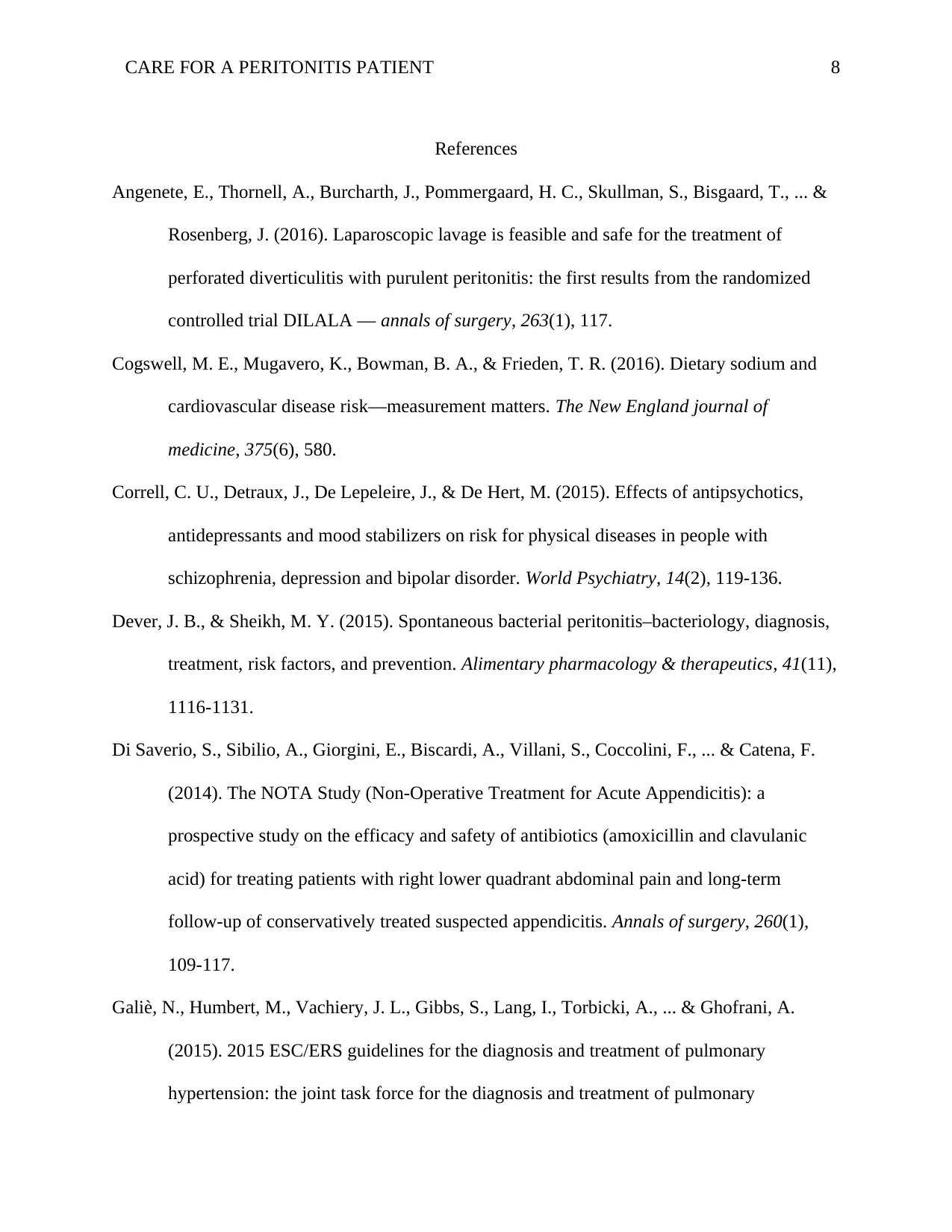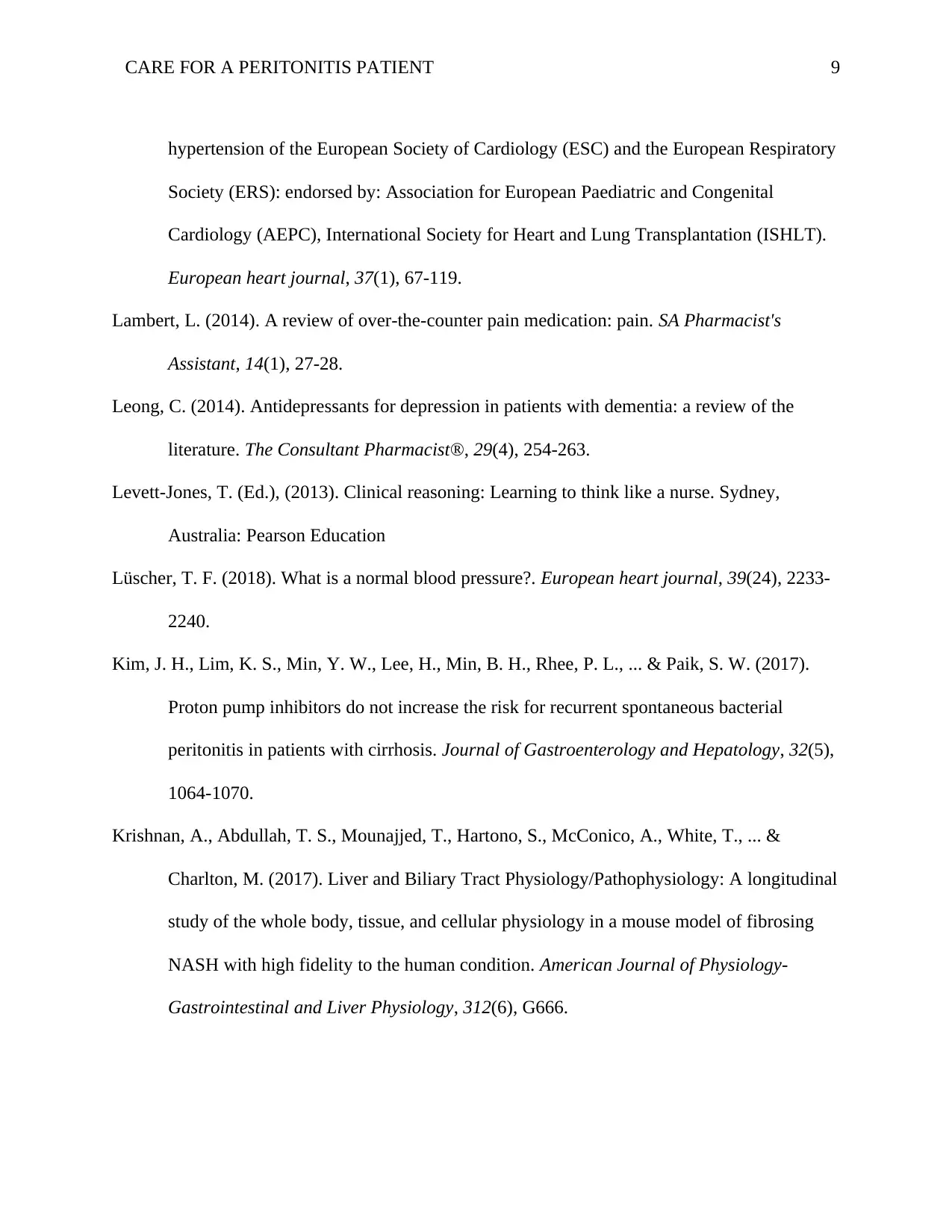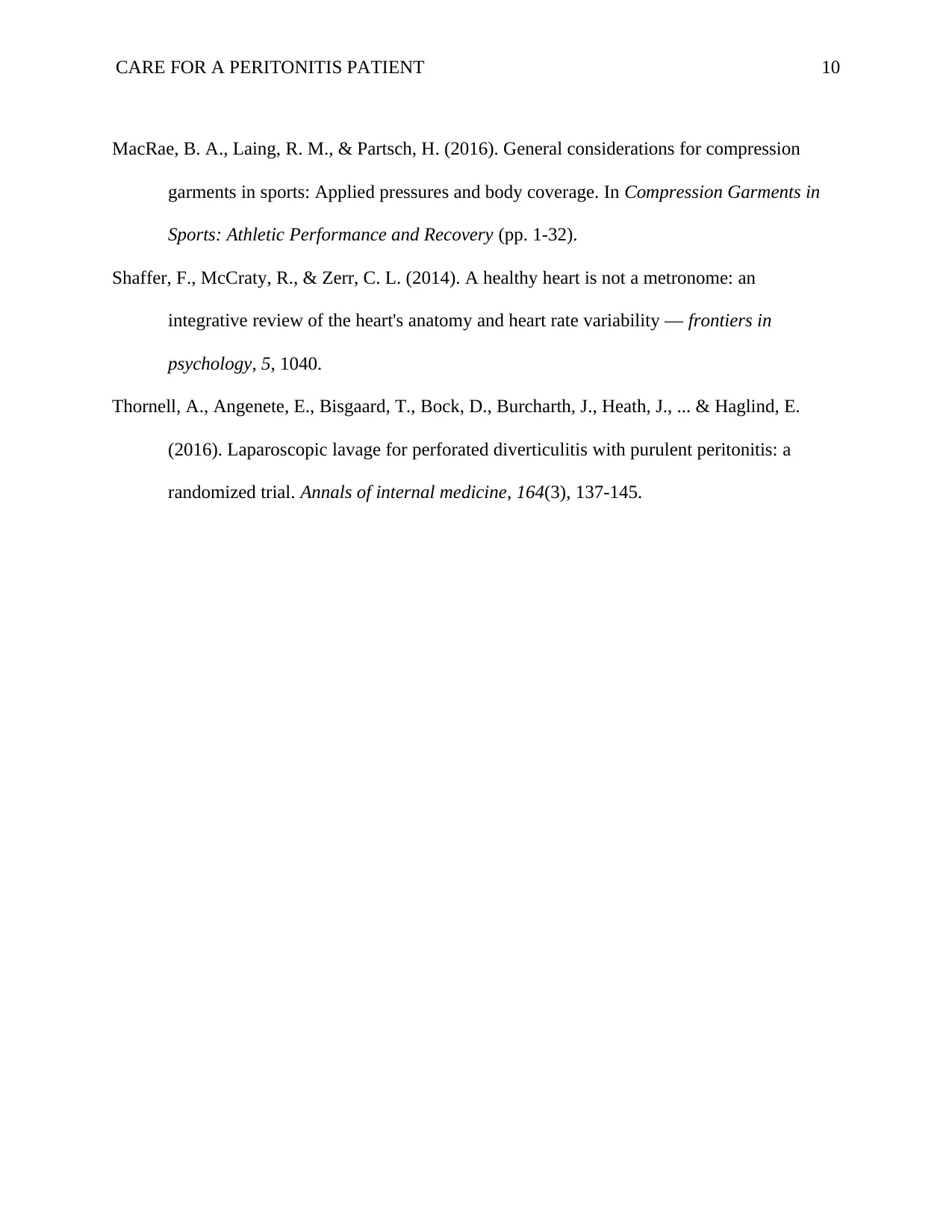This case study discusses the care for a peritonitis patient, including the use of the Clinical Reasoning Cycle and the goals of treatment. The patient has a medical history of asthma and depression. Clinical observation indicates that the patient has low blood pressure, high heart rate, and elevated temperatures. The patient also has an elevated respiratory rate. The goals of treatment should involve eliminating depression and pain. Additionally, appropriate remedies are required to restore the blood pressure to normal. Taking antidepressants help to curb the major depressive disorder. Taking plenty of water helps to raise the blood pressure. Implementing the above actions help restore the health of the patient. Apart from surgery, antibiotic treatment can help to manage peritonitis. The rupture of the peritoneum allows bacteria to enter the abdomen leading to peritonitis.
![[object Object]](/_next/static/media/star-bottom.7253800d.svg)
![[object Object]](/_next/static/media/star-bottom.7253800d.svg)
